Research on a New Inverter Control Strategy of Induction Heating Power Supply
Abstract
:1. Introduction
2. Technical Specifications
3. New Inverter Control Strategy
3.1. Circuit Structure
3.2. Unipolar Frequency-Doubling SPWM Modulation Principle
3.3. Circuit Operating Principle
3.4. Circuit Parameter Design
- (1)
- Selection of voltage divider capacitors
- (2)
- Design of compensation inductor parameters
- (3)
- Design of compensation capacitor parameters
- (4)
- Selection of clamping diodes
- (5)
- Selection of IGBTs
4. Simulation Verification
4.1. Simulation Setup
4.2. Simulation Comparison
- (1)
- The output power of the inverter with the new control strategy is shown in Figure 7. The design parameters were verified to achieve the rated output power.
- (2)
- The voltage difference between C1 and C2 is shown in Figure 8. As can be seen from Figure 8, the voltage difference between the two ends of the DC capacitor of the single-phase NPC three-level inverter is 0 and the midpoint potential voltage is stable, making the circuit structure suitable for low frequency sine wave generation.
- (3)
- The output currents of the two inverter circuits are shown in Figure 9. The current in the single-phase NPC inverter is much smaller than that in the single-phase full-bridge inverter. Therefore, it increases the flexibility of the selection of components such as reactors, capacitors, and conductive cables that are selected based on the current in the single-phase NPC circuit.
- (4)
- The voltages across the load and IGBTs in the two inverter circuits are shown in Figure 10 and Figure 11. It is known that the dc bus voltage of the single-phase NPC inverter circuit is 1000 V and the dc bus voltage of the single-phase full-bridge inverter is 540 V. It can be seen from the figures that when the voltages across the IGBTs in the two inverters are similar, the output voltage of the single-phase NPC inverter is nearly twice that of the single-phase full-bridge inverter, achieving the goal “high voltage, low current”.
- (5)
- The FFT analysis of the output voltages of the two inverters is shown in Figure 12 and Figure 13. The THD value of the output voltage with the new control strategy is 0.08%, while the THD value of the output voltage with the traditional control strategy is 0.48%. There is a reduction of 0.40% for the former compared with the latter. This verifies that the new control strategy can improve the quality of the inverter’s output waveform.
5. Conclusions
Author Contributions
Funding
Data Availability Statement
Conflicts of Interest
References
- Pop, O.; Taut, A. Analysis and simulation of power inverter with load variation for induction heating applications. In Proceedings of the International Spring Seminar on Electronics Technology, ISSE, Warsaw, Poland, 12–16 May 2010; pp. 378–382. [Google Scholar]
- Bayindir, N.S.; Kükrer, O.; Yakup, M. DSP-based PLL controlled 50–100 kHz 20 kW high frequency induction heating system for surface hardening and welding applications. IEE Proc.-Electr. Power Appl. 2003, 150, 365–371. [Google Scholar] [CrossRef]
- Han, W.; Chau, K.; Lam, W. All-utensil domestic induction heating system. Energy Convers. Manag. 2019, 195, 1035–1043. [Google Scholar] [CrossRef]
- Lucia, O.; Maussion, P.; Dede, E.J.; Burdío, J.M. Induction Heating Technology and Its Applications: Past Developments, Current Technology, and Future Challenges. IEEE Trans. Ind. Electron. 2014, 61, 2509–2520. [Google Scholar] [CrossRef]
- Li, S.; Huang, H.; Sun, F.; Lu, J.; Sun, Y. Design of signal source for induction heating power supply. J. Hubei Automob. Ind. Coll. 2020, 34, 63–68. [Google Scholar]
- Lu, H.; Hu, J.; Bi, G.; Xiang, Y. Frequency-doubled induction heating power supply based on center-tapped transformer. J. Electrotechnol. 2016, 31, 188–194. [Google Scholar]
- Wang, A. Design of high-power IGBT parallel power modules. Power Electron. Technol. 2022, 56, 128–131. [Google Scholar]
- Li, C. Research on inverter power supply system based on unipolar frequency doubling SPWM modulation. Ningxia Eng. Technol. 2009, 8, 197–200. [Google Scholar]
- Li, C. Research on Digital Control and Main Circuit of High Power Inverter; Xi’an University of Technology: Xi’an, China, 2009. [Google Scholar]
- Marko, M. Performance Analysis of High-Speed Electric Machines Supplied by PWM Inverters Based on the Harmonic Modeling Method. Energies 2021, 14, 2606. [Google Scholar] [CrossRef]
- Ding, X.; Du, M.; Duan, C.; Guo, H.; Xiong, R.; Xu, J.; Cheng, J.; kwong Luk, P.C. Analytical and experimental evaluation of SiC-inverter nonlinearities for traction drives used in electric vehicles. IEEE Trans. Veh. Technol. 2017, 67, 146–159. [Google Scholar] [CrossRef]
- Kong, W.; Liu, J.; Shao, Q.; Huang, S. Analysis of the effect of IGBT switching frequency of drive motor controller on the efficiency of drive system. Eng. Mach. 2022, 53, 21–25+8. [Google Scholar]
- Wang, W.; Li, K.; Liu, Z. Research on frequency doubling technique and harmonic suppression method of SPWM inverter. Micromotors 2015, 48, 60–64. [Google Scholar]
- Nie, X.; Huang, H.; Zhao, Y.; Lu, J. Harmonic analysis of unipolar frequency-doubled SPWM. J. Hubei Inst. Automob. Ind. 2018, 32, 65–68+74. [Google Scholar]
- Lee, S.J.; Lee, J.S.; Lee, B.K. Novel switching method for single-phase NPC three-level inverter with neutral-point voltage control. Int. J. Electron. 2017, 105, 303–323. [Google Scholar] [CrossRef]
- Li, L.; Czarkowski, D.; Liu, Y.; Pillay, P. Multilevel selective harmonic elimination PWM technique in series-connected voltage inverters. Trans. Ind. Appl. 2000, 36, 160–170. [Google Scholar] [CrossRef]
- Seo, J.H.; Choi, C.H.; Hyun, D.S. A New Simplified Space-Vector PWM Method for Three—Level Inverters. Power Electron. 2001, 16, 545–550. [Google Scholar]
- Adam, G.P.; Finney, S.J.; Ojo, O.; Williams, B.W. Quasi-two-level and three—Level operation of a diode—Clamped multilevel inverter using space vector modulation. Power Electron. 2012, 5, 542–551. [Google Scholar] [CrossRef]
- Fan, B.; Fu, Z.; Fu, J.; Liu, L. Midpoint potential compensation balance control method based on virtual space vector pulse-width modulation for NPC three-level inverter. Int. Trans. Electr. Energy Syst. 2019, 29, e12044. [Google Scholar] [CrossRef]
- Lyu, M.; Man, C.; Zhou, T. Mid-point potential balancing in three-level inverters. In Journal of Physics: Conference Series; IOP Publishing: Bristol, UK, 2023; Volume 2479. [Google Scholar]
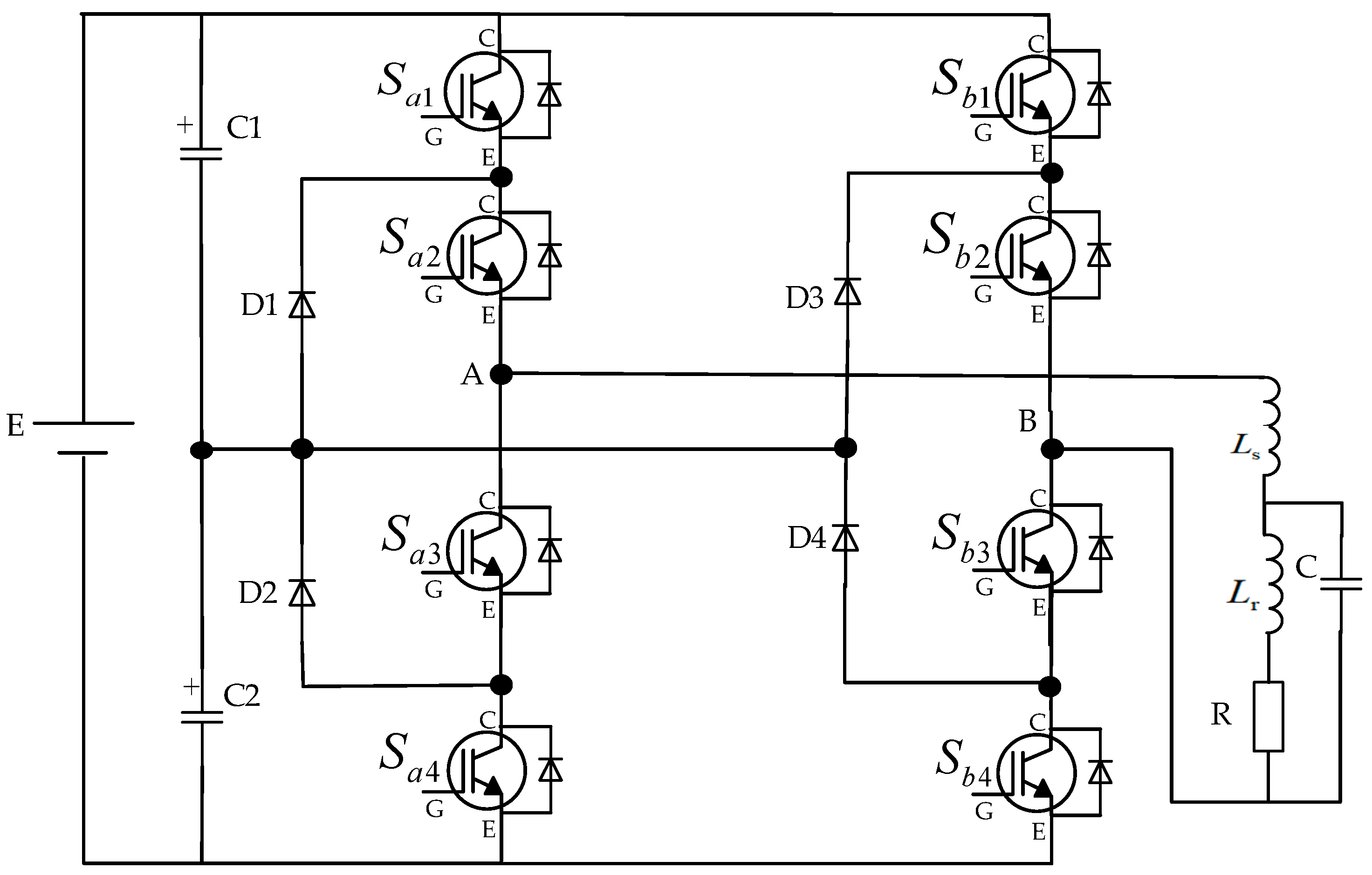
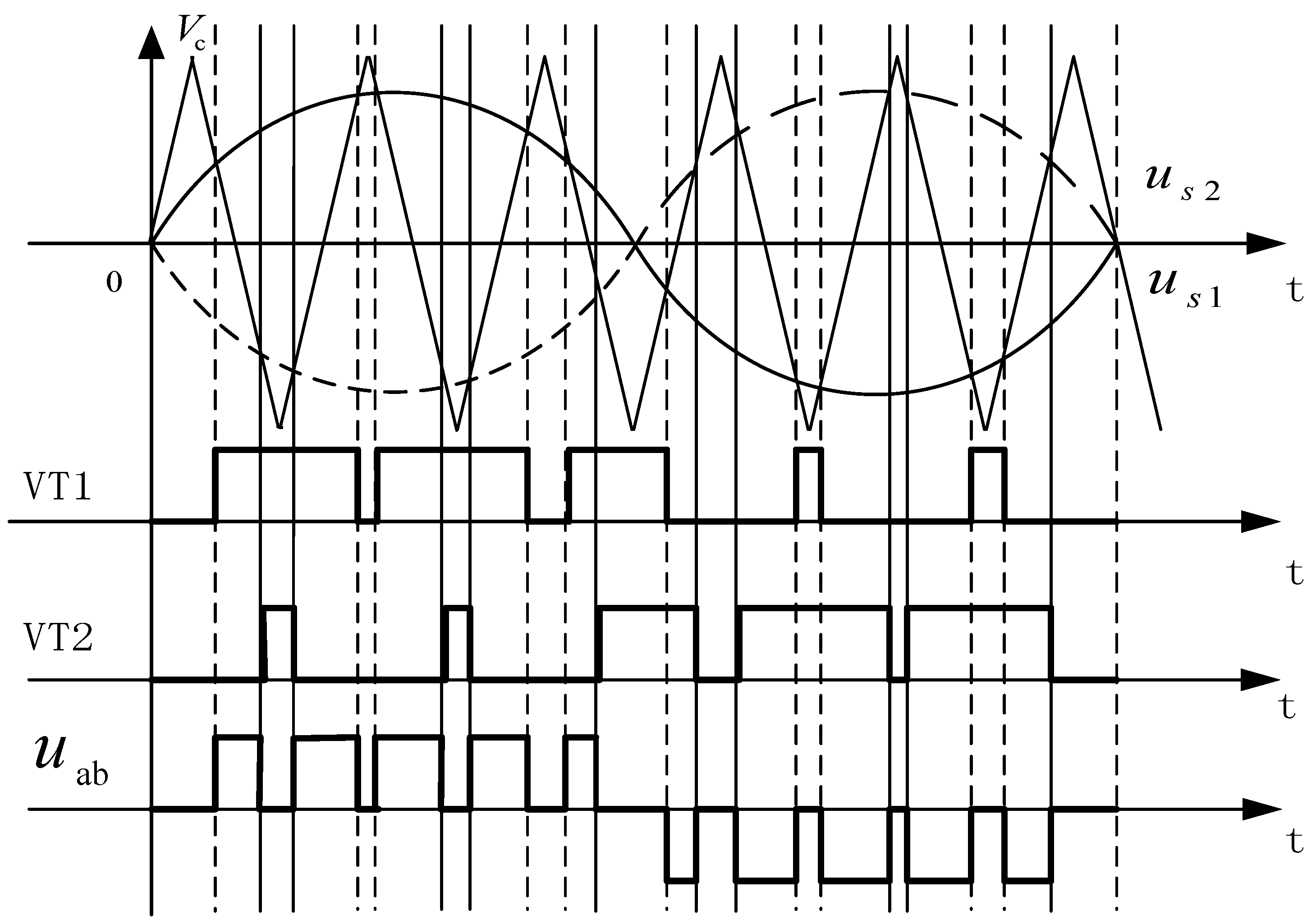



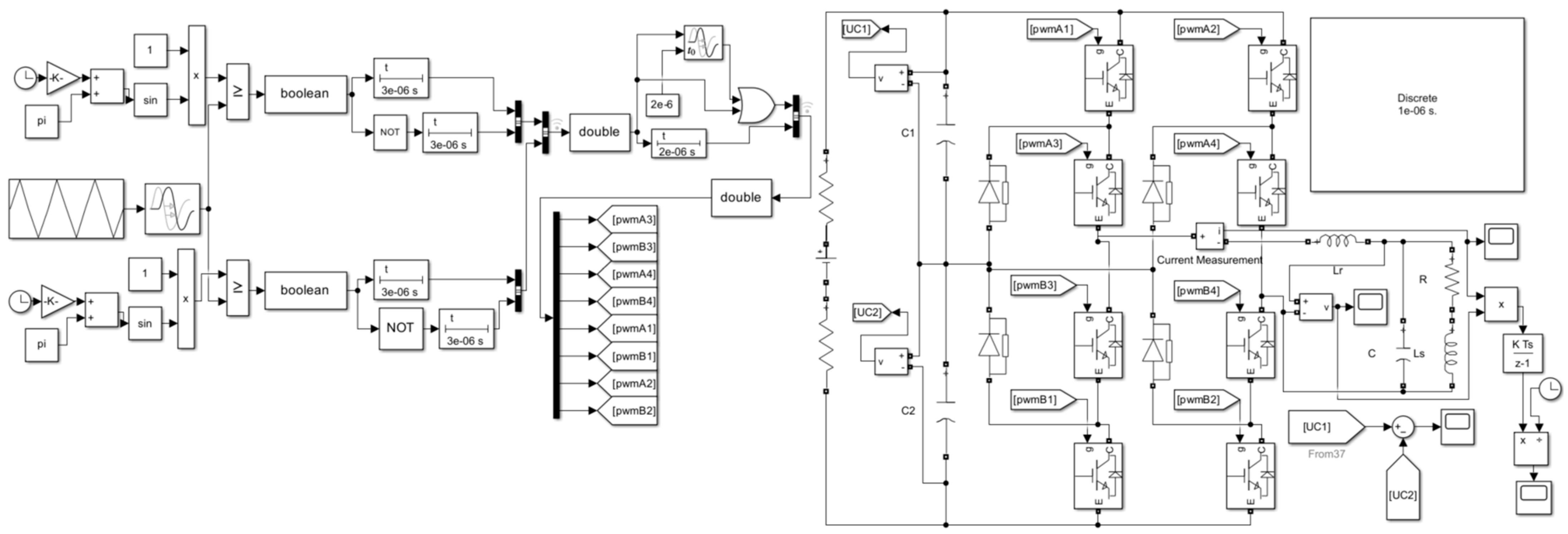


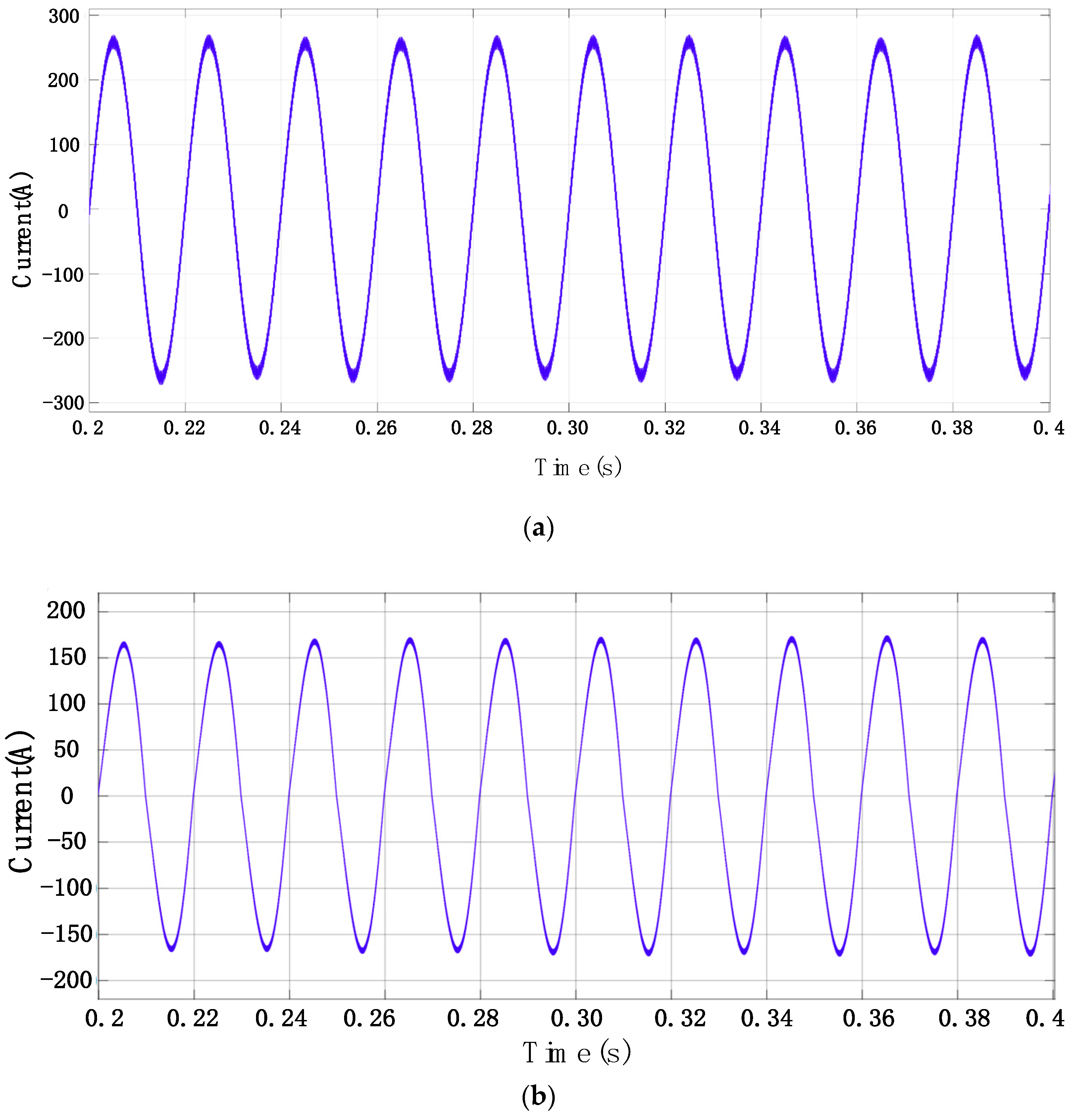
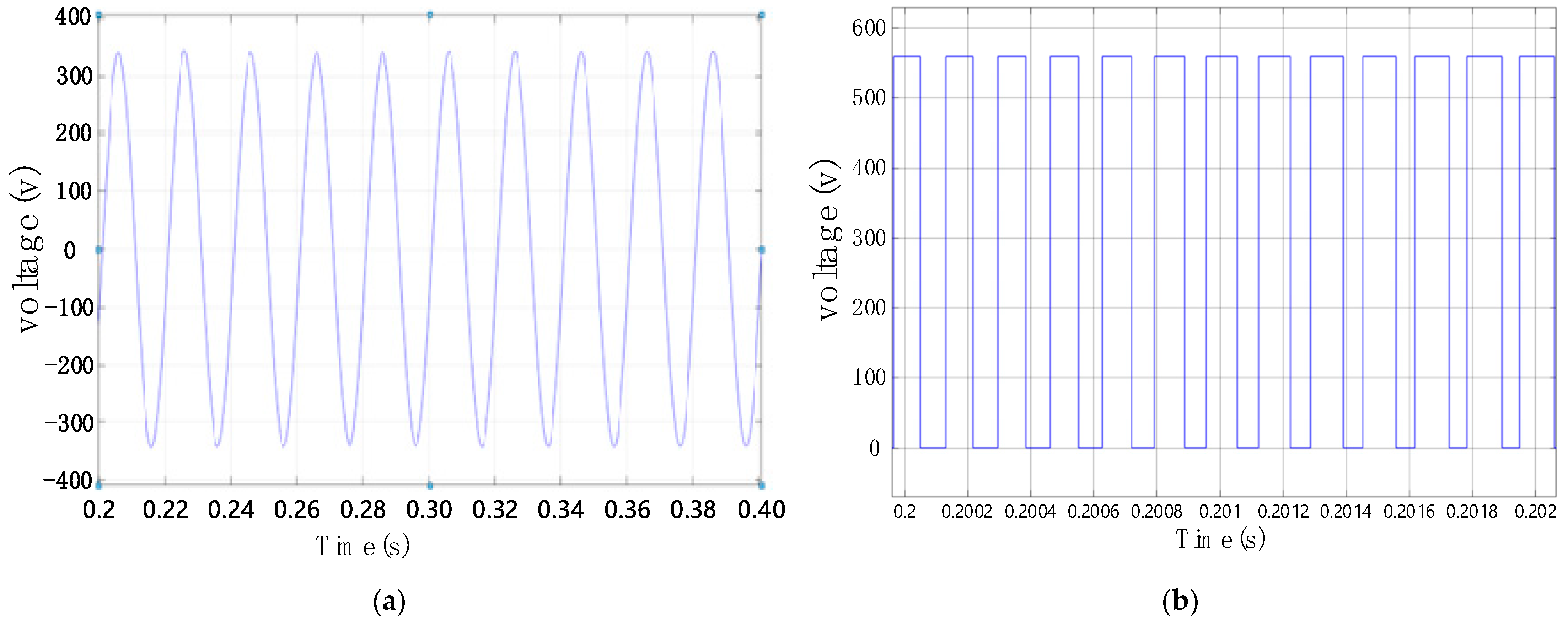
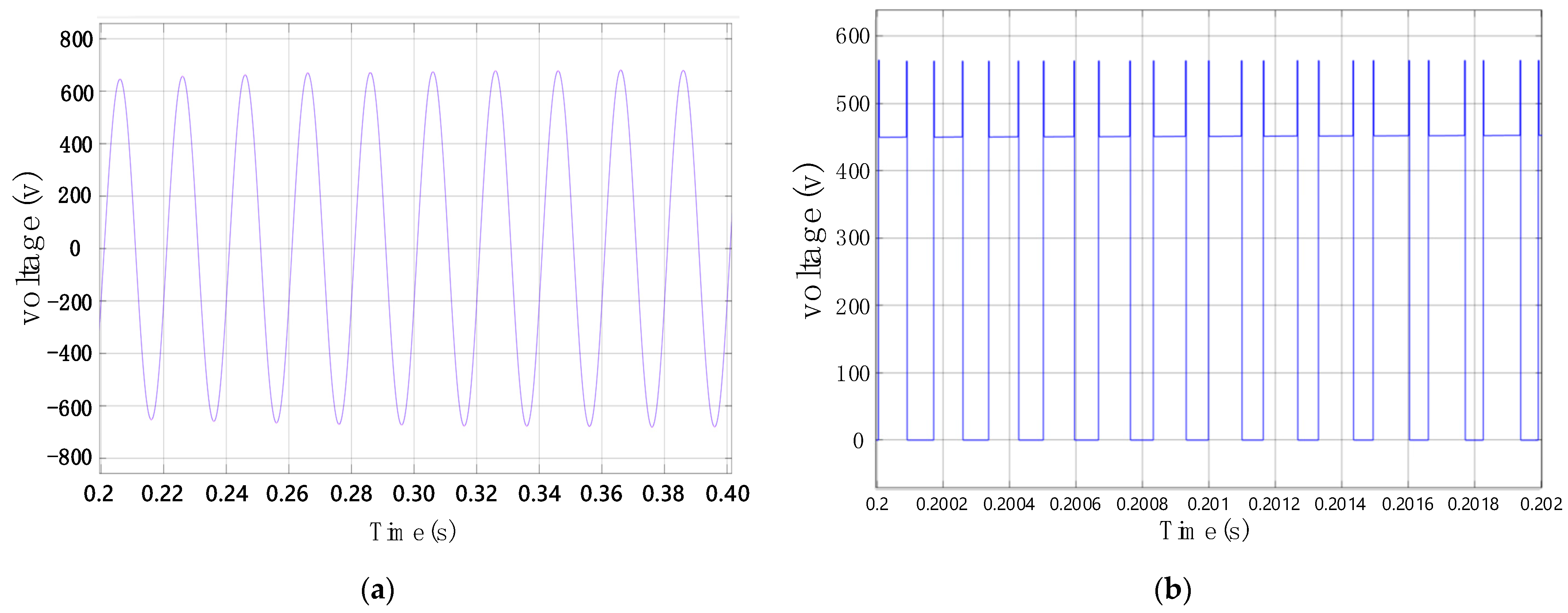
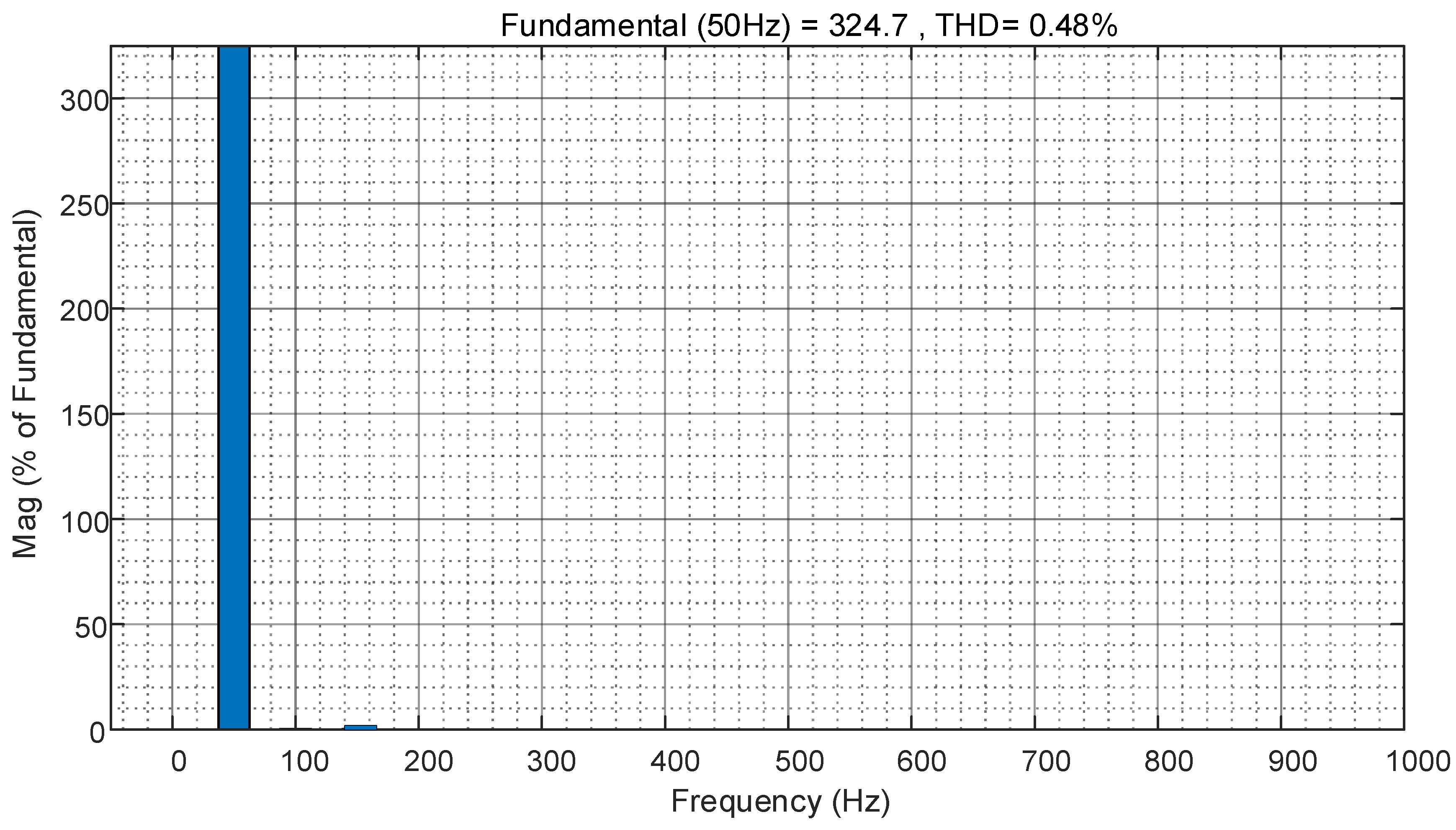
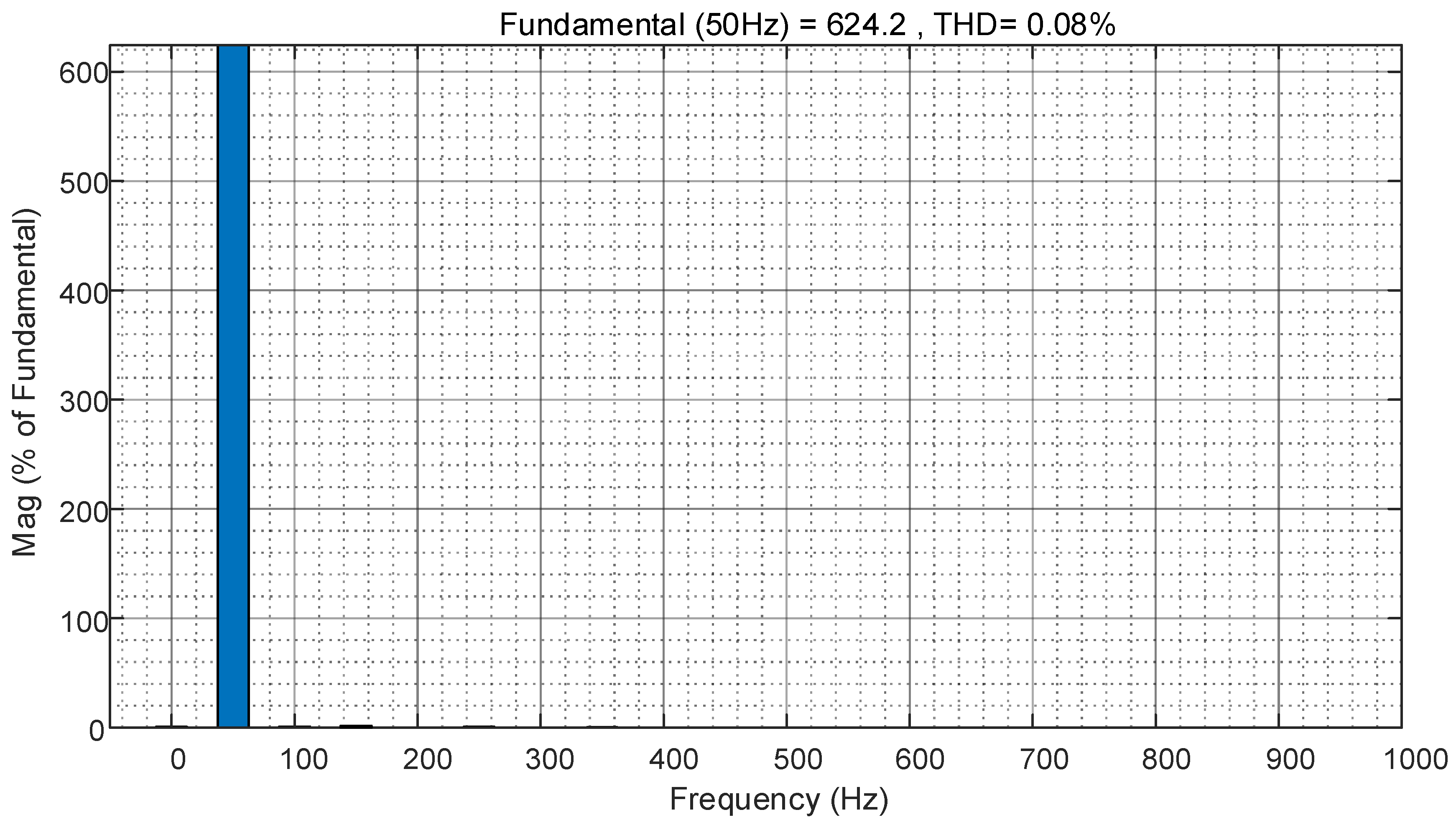
| Design Objective | Values | Unit |
|---|---|---|
| Busbar Voltage (Ud) | 1000 | V |
| Rated Power (Pmax) | 100 | kW |
| Working Frequency (fo) | 50 | Hz |
| Carrier Frequency (fs) | 6000 | Hz |
| Inversion Efficiency () | 95% | - |
Disclaimer/Publisher’s Note: The statements, opinions and data contained in all publications are solely those of the individual author(s) and contributor(s) and not of MDPI and/or the editor(s). MDPI and/or the editor(s) disclaim responsibility for any injury to people or property resulting from any ideas, methods, instructions or products referred to in the content. |
© 2024 by the authors. Licensee MDPI, Basel, Switzerland. This article is an open access article distributed under the terms and conditions of the Creative Commons Attribution (CC BY) license (https://creativecommons.org/licenses/by/4.0/).
Share and Cite
Huang, H.; Kong, Y.; Chen, J.; Jian, W.; Sun, F.; Sui, J.; Cheng, S. Research on a New Inverter Control Strategy of Induction Heating Power Supply. Electronics 2024, 13, 3469. https://doi.org/10.3390/electronics13173469
Huang H, Kong Y, Chen J, Jian W, Sun F, Sui J, Cheng S. Research on a New Inverter Control Strategy of Induction Heating Power Supply. Electronics. 2024; 13(17):3469. https://doi.org/10.3390/electronics13173469
Chicago/Turabian StyleHuang, Haibo, Yulin Kong, Jianfei Chen, Wei Jian, Fan Sun, Jixiang Sui, and Shiqing Cheng. 2024. "Research on a New Inverter Control Strategy of Induction Heating Power Supply" Electronics 13, no. 17: 3469. https://doi.org/10.3390/electronics13173469




